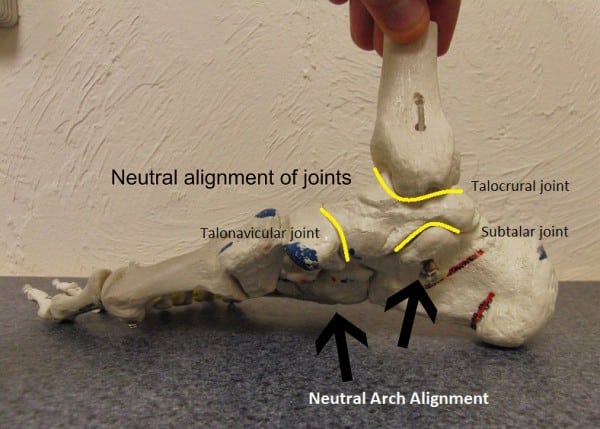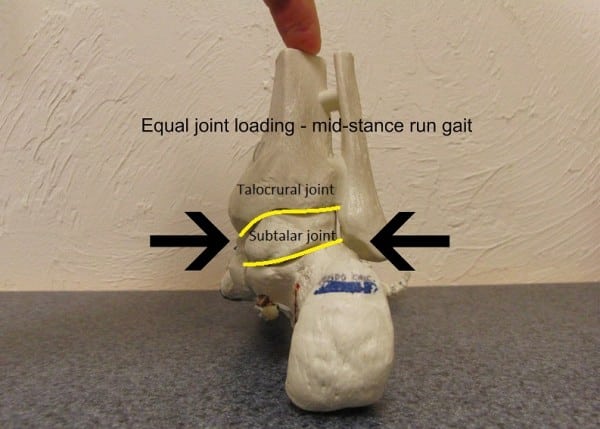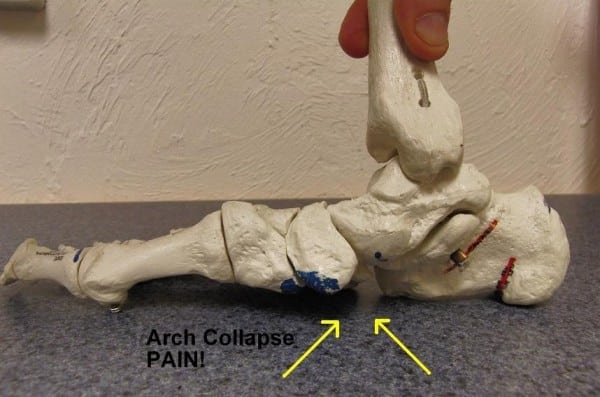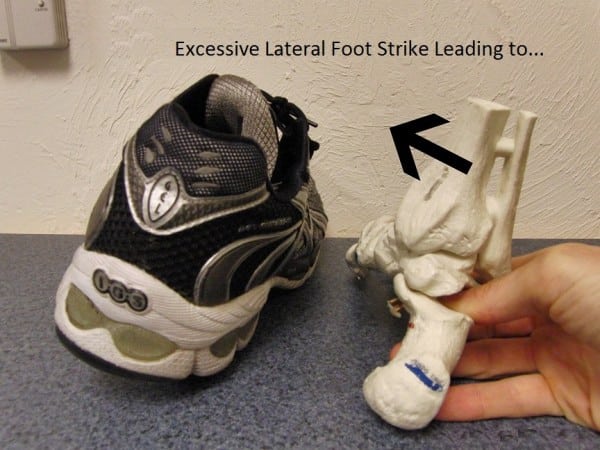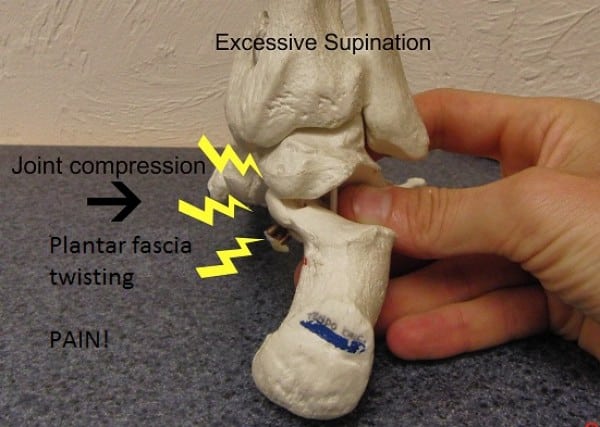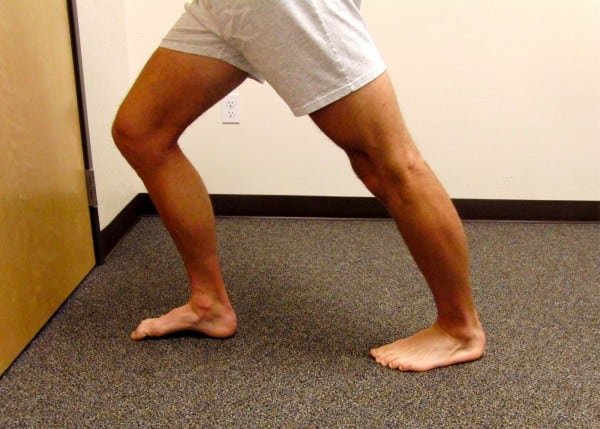 Nothing ruins a superbly good runner like plantar fasciitis, the dreaded snake chunk of the heel and arch of the foot. In essence, it’s nasty foot ache — notably heel ache — that forestalls us from working. As soon as it units in, is likely one of the most menacing and cussed circumstances.
Nothing ruins a superbly good runner like plantar fasciitis, the dreaded snake chunk of the heel and arch of the foot. In essence, it’s nasty foot ache — notably heel ache — that forestalls us from working. As soon as it units in, is likely one of the most menacing and cussed circumstances.
Ultrarunners appear notably liable to heel and arch ache. Each uphill and downhill working stresses the foot: the ups stressing the delicate tissues of the plantar arch, and the downhills offering ample pounding for the joints.
It’s okay to name your foot and heel ache plantar fasciitis — identical to that Coke on the assist station that could be Pepsi or RC Cola. However ensure that you — and your physician, PT, chiropractor, LMT or different healthcare helpers — are conscious of all of the completely different sources of foot ache. Consciousness is step one in complete therapy and quick restoration from the dreaded “PF” and its brethren.
Plantar Fasciitis, Outlined
The plantar fascia is the thick connective tissue that runs from the bottom of the heel, to the bones of the forefoot. Collectively, with intrinsic foot and ankle muscle tissues, it helps the arch of the foot and helps switch vitality from the forefoot to the rearfoot and ankle, and up the leg.
By definition, in a really literal sense, fasciitis is an lively irritation of that tissue.
However is foot and heel ache at all times plantar fasciitis? In a medical sense, one can solely have fasciitis if an lively inflammatory occasion is happening. Since irritation solely lasts 20 days, certainly, not everybody with persistent foot ache actually has fasciitis.
Not all tissue paper is Kleenex. Not all lip balm is Chapstick. And so it goes, not all heel and arch ache is plantar fasciitis. However as Shakespeare as soon as stated, “Is foot ache by another identify, any much less excruciating?”
Nonetheless, to label all foot ache as plantar fasciitis presumably limits one’s skill to rapidly and successfully get better from it. Beneath are another, equally widespread causes of foot ache.
Foot Ache: Differential Analysis
There are a many doable sources of persistent heel ache and arch ache. Listed below are the most typical I see, clinically:
Tender tissue sprains and strains. There are a number of main muscle tissues, tendons, and ligaments that span from the heel and ankle to the toes. Apart from the plantar fascia, there are a number of flexor tendons — of muscle tissues originating on the decrease leg — that course their method into the foot.
Any variety of these tissues can turn out to be strained underneath the load of highway and path working. A assessment of the Guidelines of Tissue Loading explains how a plantar floor tissue can turn out to be irritated.
Nonetheless, since delicate tissue tends to heal rapidly given correct therapy, these causes are inclined to heal quickly. These with persistent heel ache and arch ache — who see me and different medical people after weeks, months, and even years of ache — are inclined to have a ache generator of various origins:
Joint Ache. There are over two dozen joints within the foot and ankle complicated. With the acute stress of extremely path working, these joints may turn out to be stiff, irritated, or each.
Joints — articulating surfaces of two bones — require however two issues to be completely satisfied:
- Full vary of movement
- Symmetrical, equal loading of surfaces
Appears easy, however working long and hard on uneven surfaces can strip a joint of these two issues.
Vary of movement loss. Joints get the majority of their vitamin from vary of movement. The overwhelming majority of joints within the physique are synovial: two bones surrounded by a leathery capsule stuffed with fluid. The cartilage surfaces obtain little or no blood move.
With a purpose to obtain vitamin, the joint should “lubricate” itself with the fluid of the joint, absorbing vitamins from the fluid alongside its floor — by way of common, full vary of movement.
When joints cease shifting by way of their full vary, components of cartilage don’t get this vitamin. The cartilage dries up. And it’s changed with bone. This, by definition is osteoarthritis. Previous that, is ache.
Asymmetrical loading. Joints have the power to maneuver — generally small quantities in a single aircraft; generally substantial quantities in lots of instructions. However when working, joint surfaces are designed to be loaded in order that your entire floor of 1 bone impacts flush towards the opposite. This promotes most stability; it additionally ensures that cartilage receives a gradual dose of hydration and vitamins.
Asymmetrical loading happens as the results of irregular working surfaces — uneven, rocky trails, or a cambered/slanted highway–or with inefficient working mechanics.
And when a joint turns into sad, it causes ache. Usually, a painful joint will damage at its exact level of irritation. However joints of the ankle and foot will steadily refer ache to adjoining areas, out the edges or beneath the purpose of irritation, at instances mimicking delicate tissue ache.
How are you going to inform when you have a delicate tissue or joint problem? Beneath are some comparisons:
Tender Tissue Ache Traits
- Succinct, reproducible, palpable tissue ache. Can you discover the one spot that’s tender?
- Ache with lively use: once you do a toe curl or use the muscle (absent weight-bearing), does it damage?
- Ache with passive stretch: is ache produced once you bend again your foot and toes? (once more, with out weight bearing)
- Ache with resisted testing: when flexing your foot and toes, is there ache?
Joint Ache Traits
- Uninteresting, diffuse ache: no discernible “tender spot.” Fairly, it hops round and you may’t put your finger on it.
- Ache with weight-bearing by way of the joint.
- Ache is worst within the morning, after extended weight-bearing, or after resting, then bearing weight by way of the joint.
- Non-weight-bearing testing — actively flexing and passively stretching the foot — is pain-free.
In case your signs align with the joint ache traits — and in case your foot ache fails to answer delicate tissue plantar fascial therapy approaches — you seemingly have joint ache.
The three ordinary joint suspects — the talocrural, the subtalar, and the talonavicular — can all turn out to be painful and mimic plantar fascial ache. Every joint lies on the medial plantar floor of the foot, and every is liable to stiffness and asymmetrical loading throughout working.
Above reveals a medial view of the foot, exhibiting three predominant joints of the foot. The talus performs a task in all three: it’s the go-between from the foot and leg bones.
From above, it kinds the talocrural joint. The principle movement for this joint is “up and down” — it permits the toe-up/toe-down motion that happens within the run stride.
This joint is prime to get stiff, particularly with repetitive downhill working: somewhat than easily sliding and gliding, laborious downhill path working may cause jamming forces of the talus into the tibia and fibula. And when this joint will get stiff, it could refer ache in any course across the talus — entrance or again of the ankle (mimicking each anterior tibialis tendonitis and Achilles tendonitis, respectively), or it could spit ache out the facet — specifically the medial ankle and arch.
Between the talus and the calcaneus — or heel bone — is the subtalar joint. It’s designed to maneuver in a number of axes, however its major axis of movement is medial to lateral. This joint is of little consequence to the wholesome, regular runner: minor motions happen relying on the gait cycle.
Nonetheless, deviations or inefficiencies — specifically within the foot strike sample — may cause important ache emanating from the subtalar joint. Extreme lateral foot strike may cause traumatic joint compression to the medial side of the joint — mimicking plantar fascial ache!
Lastly is the talonavicular joint. This joint is the first conduit from the fore and midfoot to the ankle and leg. The navicular bone is the “keystone” of the arch. Stiffness or irritation right here also can trigger important arch ache.
The next are some illustrations of how mechanical forces may cause joint and delicate tissue ache:
Extreme medial foot touchdown results in over-stressing of the medial arch, or “arch collapse.” This stresses all tissues of the plantar floor and is the first etiology of true plantar fascial ache.
Equally widespread, particularly for quicker path runners, is extreme lateral foot strike:
Extreme lateral placing considerably compresses the medial joint floor of the subtalar joint. This compression accounts for a big share of non-plantar fascial foot ache instances. It refers ache at its web site, but additionally farther down into the arch and alongside the heel bone.
An excessive amount of lateral strike also can trigger plantar fascial torquing: the heel rotating to the best (within the above image), however the forefoot rotates to the left because it contacts the bottom — including a twisting power to the fascia.
Nerve ache. Maybe essentially the most unrecognized and ignored think about heel and foot ache is nerve ache. The peripheral nerves of the ankle and foot originate within the mind, course by way of the backbone, exit the low again and pelvis, and should course — fluidly — by way of the delicate tissues of your entire leg.
Repetitive affect forces from working — typically mixed with compromised backbone posture from working all day (or, in our regular lives, sitting) — may cause these nerves to develop “hitches.” It is a idea referred to as nerve rigidity.
Nerve rigidity accumulates within the backbone and legs with age, damage historical past, and working quantity. When nerves lose mobility, they start to create ache — typically similar to delicate tissue or joint ache, together with plantar foot ache.
And since the identical repetitive or extreme affect forces that create joint and delicate tissue ache additionally create nerve rigidity, it is extremely widespread for a runner to current with each joint/delicate tissue and nerve ache overlay on the identical time.
Virtually each runner (and most other people) has some extent of nerve rigidity. Right here’s a check:
Sit together with your again towards a chair, head and shoulders upright. Lengthen your knees straight, with toes up. Notice the diploma of “stretch” behind your legs. Then, stoop your head and shoulders. Any improve in stretch sensation is nerve rigidity from tensing the nerve on the head and neck.
Nerve Ache Traits
- Ache at relaxation — the hallmark signal of nerve ache overlay: do you may have any signs in your foot when at relaxation, specifically sitting (particularly, with extended sitting, lengthy after you’ve stood on it)?
- Signs described as burning, buzzing, or uninteresting aching.
- Different signs greater up the leg, particularly: lumbar, buttock, posterior thigh, calf, or shin ache.
Fairly often, a runner who applies delicate tissue or joint therapy ideas will get partially higher, however fail to completely get better as a result of they fail to deal with the nerve rigidity element.
Runners and clinicians, alike, want to acknowledge the existence of nerve rigidity and deal with it concurrent with any delicate tissue or joint irritation.
Remedy Approaches
Please focus on any of the next therapy approaches together with your physician, bodily therapist, or chiropractor earlier than performing.
Tender tissue
These are easy as a result of everybody who [thinks they have] PF does them:
- Relaxation, ice, delicate tissue mobilization, stretch, strengthen.
Actual, precise delicate tissue plantar ache will heal quickly, given right doses of the therapies above. Those that don’t reply to that strategy seemingly have a joint or nerve problem.
Joint ache
The 2 therapy approaches to joint ache within the foot embody full restoration of joint vary of movement and symmetrical loading.
Vary of movement restoration
Ankle dorsiflexion. Regular ankle dorsiflexion is about 20-30 levels past a 90-degree bend on the ankle. When you can not stretch this far — or when you have signs in entrance, or anyplace across the ankle joint — your signs could be as a result of stiffness there. To mobilize a stiff talocrural joint, strive the next:
Carry out an ordinary calf stretch, with a couple of minor changes: be certain your stretch foot is completely straight forward. Preserve the foot flat, lean ahead with a straight knee till full rigidity.
Then, slowly bend the knee as a lot as doable with out permitting the heel to rise. Slowly oscillate between a bent and straight knee. This mobilizes the tibia and fibula over the talus, restoring movement to this joint.
Subtalar inversion and eversion. A standard heel bone ought to be capable of “wiggle” about 10-20 levels facet to facet. To self-test, cross your ankle over the other knee. Greedy maintain of your ankle with one hand, drive firmly downward together with your reverse hand on the within of your heel bone.
Can you progress it, in any respect? If not, and you’ve got heel and arch ache on the underside/medial facet of your foot, your signs could also be coming from a stiff subtalar joint.
To self-mobilize, carry out the maneuver described above with agency, sluggish, on-and-off downward stress. The diploma of movement will probably be slight, however the potential for ache reduction is substantial when movement is restored right here.

The writer making use of a straight downward stress to the heel bone, stabilizing on the ankle. A standard heel will “wiggle” a couple of millimeters in each up and down instructions.
Midfoot arch. A standard midfoot may have some extent of give, each to the arms and when standing on it. In standing, a usually cell foot ought to “sink” a couple of millimeters to the ground.
Shoe orthotics are supposed for many who are hypermobile of their arch: their arch joints are excessively versatile, and the arch “collapses” (sometimes outlined as one centimeter or extra) in weight bearing.
Nonetheless, far most of the time, runners have hypomobile arches — they merely don’t transfer sufficient. These people sometimes reply poorly to orthotics (typically with no enchancment, and generally they worsen ache).
A hypomobile, stiff arch will profit from self-mobilization. You probably have signs that originate farther down the foot, close to the apex of the arch — and your foot lacks any give in standing — strive the next mobilization:
Stand with the stiff foot down. Place your reverse heel straight on high of the stiffest space — sometimes the navicular bone, which lies straight in entrance of the tibia-fibula complicated. Gently, then progressively bear down with substantial weight onto the navicular.
This will likely appear scary — check it first. A stiff navicular will give little or no, even with full stress. Ache often comes from pores and skin compression. “Stomp” on and off 10-20 instances. Carry out earlier than and after working, and/or within the morning, when stiff joints are typically stiffest.
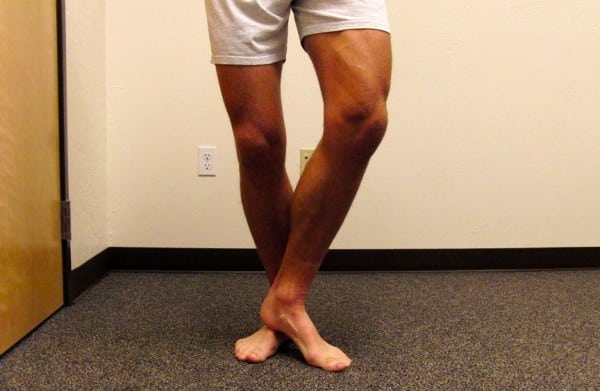
The writer, performing a mid-foot self-mobilization in standing. Strive with soft-heeled sneakers on, if too sore with direct pores and skin contact.
Joint Loading Elements
Loading the joint equally is significant to joint happiness. Orthotics will be useful for these with hypermobile toes, as they’ll forestall arch collapse. They’re additionally useful for slower runners with shorter stride lengths. A brief stride tends to incorporate extreme vertical forces (up and down movement).
This vertical loading bears down on the medial arch — past the aptitude of muscle tissues, tendons, and the plantar fascia to help it. An orthotic can assist in sustaining the arch. However in the end, an environment friendly stride that emphasizes regular hip mobility with better ahead momentum is most necessary in stopping arch collapse.
Different necessary components for symmetrical, low-stress loading embody the place and angle of foot strike. The foot ought to at all times land as near straight beneath one’s middle of mass as doable. A foot that strikes in entrance, tends to strike:
- On the heel;
- On the surface fringe of the foot (heel or midfoot); or
- On the mid or forefoot, laterally-biased.
A heel strike creates appreciable stiffness by way of the talocrural and subtalar joints. A lateral strike may trigger asymmetrical loading of the subtalar joint, and/or a twisting, torquing power by way of the midfoot and plantar fascia (see photograph above). A midfoot or forefoot strike — considerably forward of the physique — will stress out these joints or pressure the plantar fascia.
The simplest, sustainable, and necessary technique to right a foot strike problem is addressing it proximally with:
- Correct ahead trunk engagement, and
- Shifting the hips such that the foot is “pulled” beneath the physique
After guaranteeing correct foot placement beneath the trunk, shoot for a whole-foot strike, the place all components of the foot are absorbing and sharing affect forces.
Nerve Ache Remedy
To deal with nerve rigidity, check with the check above, besides make one slight adjustment:
Sit in a chair, slumped ahead. Slowly lengthen the affected leg with toes up. Because the foot and decrease leg rise, slowly lengthen your head on the identical pace. The diploma of stretch ought to be considerably much less, however nonetheless current.
Maintain one second, then slowly decrease. That is known as a “nerve floss” train: the pinnacle provides the nerve slack that’s taken by the foot, and vice versa. Repeat 10 to twenty instances, and carry out three to 4 instances a day, particularly earlier than and after working. Right here is a video hyperlink for the train.
Name for Feedback (From Bryon)
- Have you ever suffered from heel ache, plantar fasciitis, or different foot ache?
- How did you heal your plantar fasciitis, heel ache, or different foot ache?

